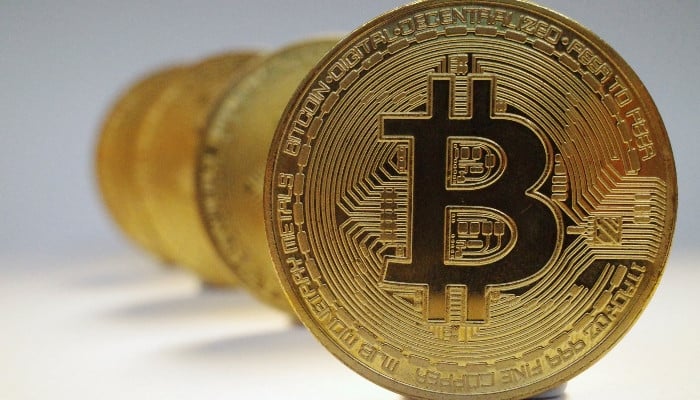Market Pulse
In the dynamic and often volatile world of digital assets, stablecoins have emerged as a cornerstone, providing a much-needed anchor amidst fluctuating prices. While their market capitalization frequently captures headlines, the underlying mechanics and essential functions of stablecoin companies are often less understood. These entities are more than just custodians of fiat currency; they are pivotal architects of financial infrastructure, bridging traditional finance with the burgeoning decentralized economy and enabling a multitude of use cases that extend far beyond speculative trading.
The Core Promise: Stability in Volatility
At their heart, stablecoins address one of cryptocurrency’s most significant barriers to widespread adoption: price volatility. Traditional cryptocurrencies like Bitcoin and Ethereum can experience dramatic price swings, making them impractical for everyday transactions, payroll, or as reliable stores of value for short-term needs. Stablecoins mitigate this by pegging their value to a less volatile asset, most commonly fiat currencies like the U.S. dollar.
- Price Stability: By maintaining a 1:1 peg (or close to it) with reserve assets, stablecoins offer predictability in value.
- Bridging Function: They facilitate easy entry and exit between fiat and crypto markets, reducing friction and transaction costs compared to traditional banking rails.
- Settlement Layer: Stablecoins act as efficient settlement layers within the crypto ecosystem, enabling faster and cheaper international transfers.
Types of Stablecoins: A Deeper Dive into Mechanics
Stablecoin companies employ various methodologies to maintain their pegs, each with its own structure and risk profile. Understanding these mechanisms is crucial to appreciating their operational complexities.
The primary categories include:
- Fiat-Backed Stablecoins: These are the most prevalent, exemplified by Tether (USDT) and USD Coin (USDC). For every stablecoin token issued, an equivalent amount of fiat currency (or highly liquid assets like commercial paper, government bonds) is held in reserves by the issuing company. Regular audits or attestations are often conducted to verify these reserves, aiming to build user trust. The company’s core function involves managing these reserves, processing redemptions and issuances, and ensuring regulatory compliance.
- Crypto-Backed Stablecoins: Tokens like Dai (DAI) are collateralized by other cryptocurrencies, often in an overcollateralized manner to absorb price fluctuations of the underlying assets. These are typically managed by decentralized autonomous organizations (DAOs) and smart contracts, reducing reliance on a single corporate entity. The stablecoin company (or DAO) manages the smart contract protocols, liquidation mechanisms, and collateral vaults.
- Algorithmic Stablecoins: These attempt to maintain a peg through code and economic incentives, adjusting supply and demand automatically without direct fiat or crypto collateral. While innovative, their complexity has historically presented significant challenges in maintaining stability during market stress. Companies in this space focus on designing and iterating sophisticated protocol mechanisms.
Beyond Trading: Real-World Utility
The utility of stablecoins extends significantly beyond merely providing a stable trading pair on exchanges. They are increasingly integrated into various real-world financial applications, showcasing their transformative potential.
- Global Remittances: Stablecoins enable faster and cheaper cross-border payments, bypassing traditional banking intermediaries and their associated fees and delays.
- Decentralized Finance (DeFi): They are the backbone of DeFi protocols, used as collateral for loans, liquidity in decentralized exchanges, and yield-generating assets in various protocols.
- E-commerce and Payments: As a digital alternative to fiat, stablecoins can facilitate online purchases and merchant payments, particularly in regions with unstable local currencies or limited access to traditional banking services.
- Hedging and Savings: For individuals and businesses operating in volatile markets, stablecoins offer a way to hedge against crypto price fluctuations or to hold savings in a digital format that retains its purchasing power.
Regulatory Landscape and Future Outlook
As stablecoins become more integral to the global financial system, their regulatory treatment continues to evolve. Governments and financial authorities worldwide are exploring frameworks to ensure consumer protection, financial stability, and combat illicit activities. Transparent reserve management, robust audit mechanisms, and clear operational guidelines are becoming paramount for stablecoin issuers. The ongoing development of appropriate regulatory oversight is crucial for enhancing trust and fostering broader institutional adoption, solidifying stablecoins’ role as a foundational element of the future digital economy.
Conclusion
Stablecoin companies, in their diverse forms, perform an indispensable service by injecting stability into the otherwise turbulent cryptocurrency landscape. Their core functions—ranging from meticulous reserve management for fiat-backed assets to sophisticated algorithmic governance—underpin a vast array of financial innovation. By offering a digital medium of exchange and store of value that mimics traditional currencies, stablecoins are not just a bridge for traders; they are a vital component enabling the development of truly global, efficient, and inclusive financial systems for the digital age.
Pros (Bullish Points)
- Provides crucial price stability in volatile crypto markets, facilitating practical use cases like payments and remittances.
- Acts as an efficient bridge between traditional fiat currencies and the decentralized digital asset ecosystem, enhancing liquidity and accessibility.
Cons (Bearish Points)
- Reliance on centralized entities for fiat-backed stablecoins introduces counterparty risk and requires robust reserve transparency.
- Algorithmic stablecoins, while innovative, have historically demonstrated vulnerabilities under severe market stress, highlighting inherent design complexities.
Frequently Asked Questions
What is the primary purpose of a stablecoin?
The primary purpose of a stablecoin is to minimize price volatility by pegging its value to a more stable asset, typically a fiat currency like the U.S. dollar, enabling it to function as a reliable medium of exchange and store of value within the crypto ecosystem.
How do fiat-backed stablecoins maintain their peg?
Fiat-backed stablecoins maintain their peg by holding an equivalent amount of fiat currency or highly liquid assets (like cash equivalents, commercial paper, or government bonds) in reserve for every token issued. Issuing companies are responsible for managing these reserves and often undergo regular audits or attestations to verify them.
What are some real-world applications of stablecoins?
Beyond trading, stablecoins are used for global remittances (faster, cheaper cross-border payments), as collateral and liquidity in Decentralized Finance (DeFi), for e-commerce and merchant payments, and as a hedging tool or digital savings account against market volatility.



